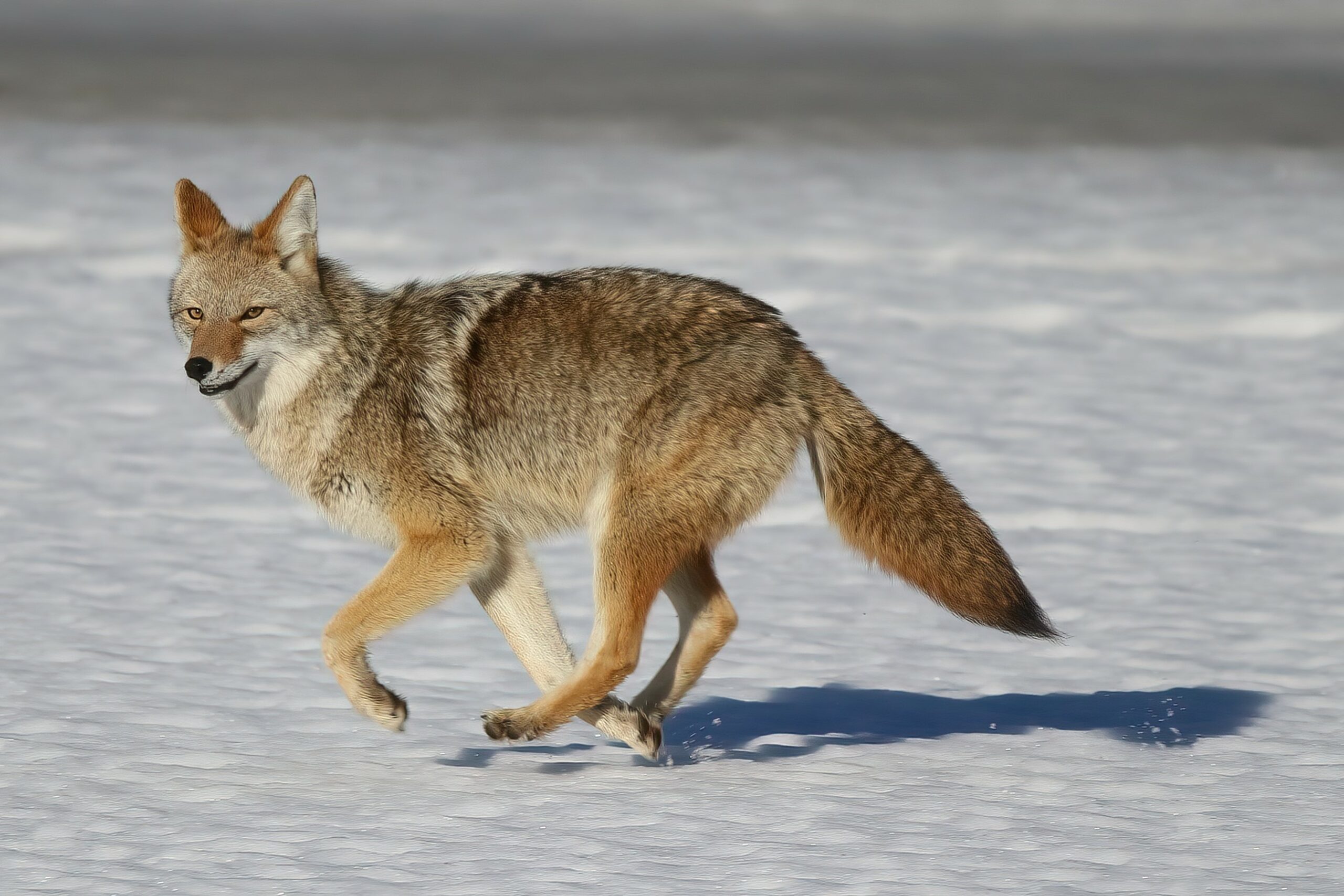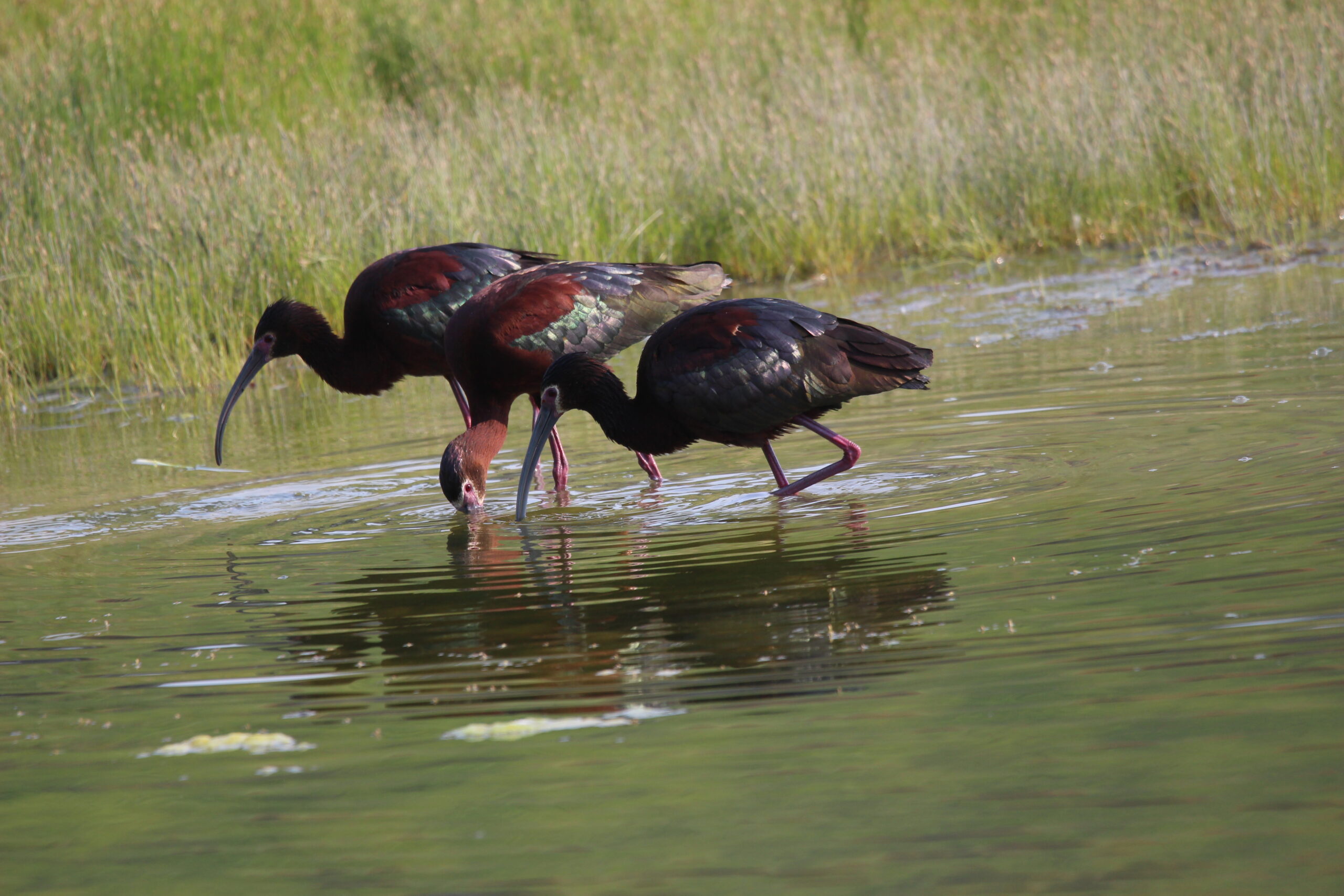Visiting Fish Creek Provincial Park a few times a month, Elaine and I often head down the same set of stairs and walk to the banks of Fish Creek. A stump that’s a common feeding area for nuthatches, chickadees, pine siskins and Downy woodpeckers is usually our first stop. Desiring a change, I suggested taking a path less travelled on this early February morning in Bebo Grove. Walking along the south side of the sizable storm pond, our eyes scanned tree tops while our ears kept a constant vigil for bird calls and songs.
Catching movement in the dried grass and thistle on the pond’s east shore, our focus sharpened. One animal I always hope to see on every outing was exploring the reeds and grasses, moving at a steady pace. Turning west on the north side of the pond, about 85 yards distant and across from us, our “National Geographic” moment with this wondrous creature began. With limited choices for food in February, a magnificent coyote was engaged in the classic hunting technique known as “mousing”. Moving slowly, then stopping, it was clear the coyote was listening, smelling and waiting for prey in the thistles and grass. Rotating its head to the sound of prey from one ear and then to the other ear, told us the coyote was pinpointing prey. With the snow undoubtedly silencing the movements of the coyote, Elaine and I watched, with our camera shutters clicking of course. From a full stop, the coyote leapt into the air and dropped on its prey’s location, with its front legs straightened to brace for a strike with immense force. Hoping to see a mouse dangling from its jaws, we saw that the coyote had missed. Undeterred, it repeatedly moused for several minutes, airborne often but unsuccessful each time. Suddenly the coyote stopped and headed out onto the storm pond ice. A cyclist had turned north on the path and would shortly be near the coyote’s location. Wary, it loped across the ice, acknowledging our presence as it headed west into the treed areas of Bebo Grove.
“Canis latrans”, originally called “coyotl” in Aztec language, and often known as the “trickster” in indigenous cultural mythology, has adapted well in Alberta’s urban environments. Primarily a flesh eater, dog owners do have to keep an eye out for this predator in city parks. Having exceptional senses of hearing and smell help the coyote both in hunting and avoiding danger. Coyotes are unique in that they can change direction or course in mid-step. Reaching speeds of 25mph while galloping, a coyote can full out run at speeds of 40mph.
We were thankful and thrilled with our coyote experience, chatting about it as we continued on the path less taken. Robert Frost did indeed have it right: “Two roads diverged in the wood and “ we “took the one less travelled by and that has made all the difference” in a day of birding.
The Path Less Travelled

In response to Canada's Online News Act and Meta (Facebook and Instagram) removing access to Canada's local news from their platforms, Anchor Media Inc encourages you to get your news directly from your trusted source by bookmarking this site and downloading the Rogue Radio App. Send your news tips, story ideas, pictures, and videos to info@anchormedia.ca.




